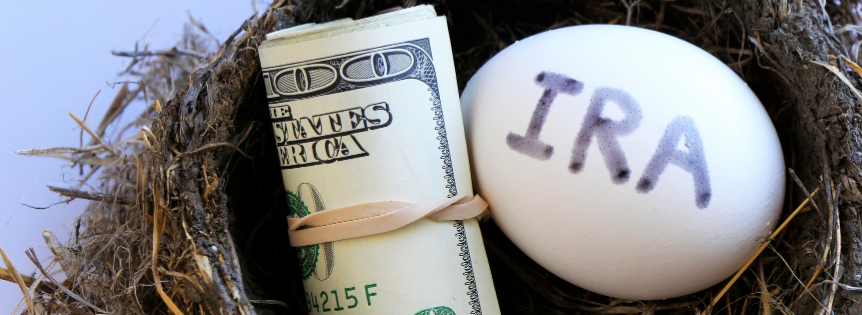
The potential of owning real estate within an Individual Retirement Account (IRA) has become increasingly attractive to many investors. In Belleville, as in many other parts of the country, a self-directed IRA can provide a tax-advantaged vehicle for purchasing real estate. However, there are specific rules and guidelines that must be followed to ensure that the investments remain compliant with IRA regulations. Let’s dive into the details.
1. What is a Self-Directed IRA?
A Self-Directed IRA is an Individual Retirement Account that allows for a broader range of investments, not limited to stocks and bonds. The account holder (or beneficiary) can make investment decisions on their own, provided the investments align with IRS regulations.
2. Prohibited Transactions
When it comes to real estate investments, the IRS has laid out certain transactions which are strictly prohibited:
- Direct benefit: You cannot buy a property that you or disqualified persons (like your spouse, ancestors, descendants, and their spouses) already own. Similarly, the property can’t be used by you or these disqualified individuals. For example, you can’t purchase a vacation home and then use it for personal purposes.
- Indirect benefit: Any arrangement wherein there is a direct or indirect furnishing of goods, services, or facilities between an IRA and a disqualified person is prohibited.
- Self-dealing: You cannot lend money, provide services, or perform any other act where there’s a conflict of interest involving the IRA property.
3. UBIT (Unrelated Business Income Tax)
The Unrelated Business Income Tax (UBIT) is a tax levied on income generated from business activities within tax-exempt entities, like IRAs or non-profits, that aren’t directly related to their primary tax-exempt purpose. For self-directed IRAs, UBIT can come into play if the IRA invests in an active business or uses leverage (borrowed money) to purchase real estate. While the tax ensures that tax-exempt entities don’t have an unfair advantage over taxable entities in commercial activities, it’s essential for self-directed IRA holders to be aware of UBIT to avoid unexpected tax liabilities.
4. All Expenses and Income Must Flow Through the IRA
investing in assets like real estate, it’s crucial to understand that all related expenses and income must strictly flow through the IRA itself. This means that any costs associated with an investment property, be it maintenance, property taxes, or repair expenses, must be paid directly from the IRA. Conversely, any revenue generated, such as rental income or profits from a sale, must be deposited back into the IRA. This system maintains the tax-advantaged status of the account and ensures compliance with IRS regulations. Any deviation, such as personally covering an expense or redirecting income, could lead to tax penalties and jeopardize the IRA’s benefits.
5. Due Diligence is Critical
is a fundamental principle in the investment world, emphasizing the thorough research and analysis of an asset or transaction before committing. Especially in the realm of self-directed IRAs, where investments range from traditional assets to alternative ones like real estate or private businesses, performing comprehensive due diligence is paramount. It involves evaluating the viability, risks, potential returns, and the authenticity of the investment. Not only does this process help investors understand the intricacies and potential pitfalls of their chosen assets, but it also safeguards against fraud, poor investment choices, and unforeseen complications. In essence, due diligence acts as a protective measure, ensuring that one’s hard-earned money is invested wisely and responsibly.
6. Partnering on Purchases
within the context of a self-directed IRA refers to the strategy where multiple parties or entities come together to invest in an asset, such as real estate. This means that an individual’s self-directed IRA can collaborate with another person’s IRA, a different individual, or even an entity like an LLC to acquire a property or other assets. The invested amounts, profits, and expenses are typically divided based on each party’s ownership percentage in the investment. It’s an effective way to pool resources for larger investments that might be out of reach for a single IRA. However, when partnering, it’s vital to ensure proper documentation and adherence to IRS regulations to maintain the tax-advantaged status of all involved IRAs.
7. No Traditional Financing
is a crucial rule to remember when using a self-directed IRA to invest, especially in real estate. While individuals often use mortgages or other forms of financing to buy properties, a self-directed IRA cannot obtain a traditional mortgage due to IRS regulations. Instead, if an IRA requires additional funds for a property purchase, it must secure a non-recourse loan. This type of loan is structured so that only the property itself serves as collateral, meaning if there’s a default, the lender can only seize the property and cannot pursue other IRA assets or the account holder personally. Utilizing non-recourse loans ensures that other assets within the IRA remain protected, but it’s essential to understand the terms and implications of such financing to make informed investment decisions.
Conclusion
investing with a self-directed IRA offers a unique avenue for diversifying one’s retirement portfolio, be it through real estate, precious metals, or private businesses. However, it’s vital to navigate the specific rules and intricacies, from avoiding traditional financing to ensuring all transactions are IRS-compliant. Partnering with experienced entities, such as Cardinal Creek Properties, can provide the expertise and guidance needed to leverage the full potential of self-directed IRAs while ensuring regulatory adherence and sound investment decisions.

